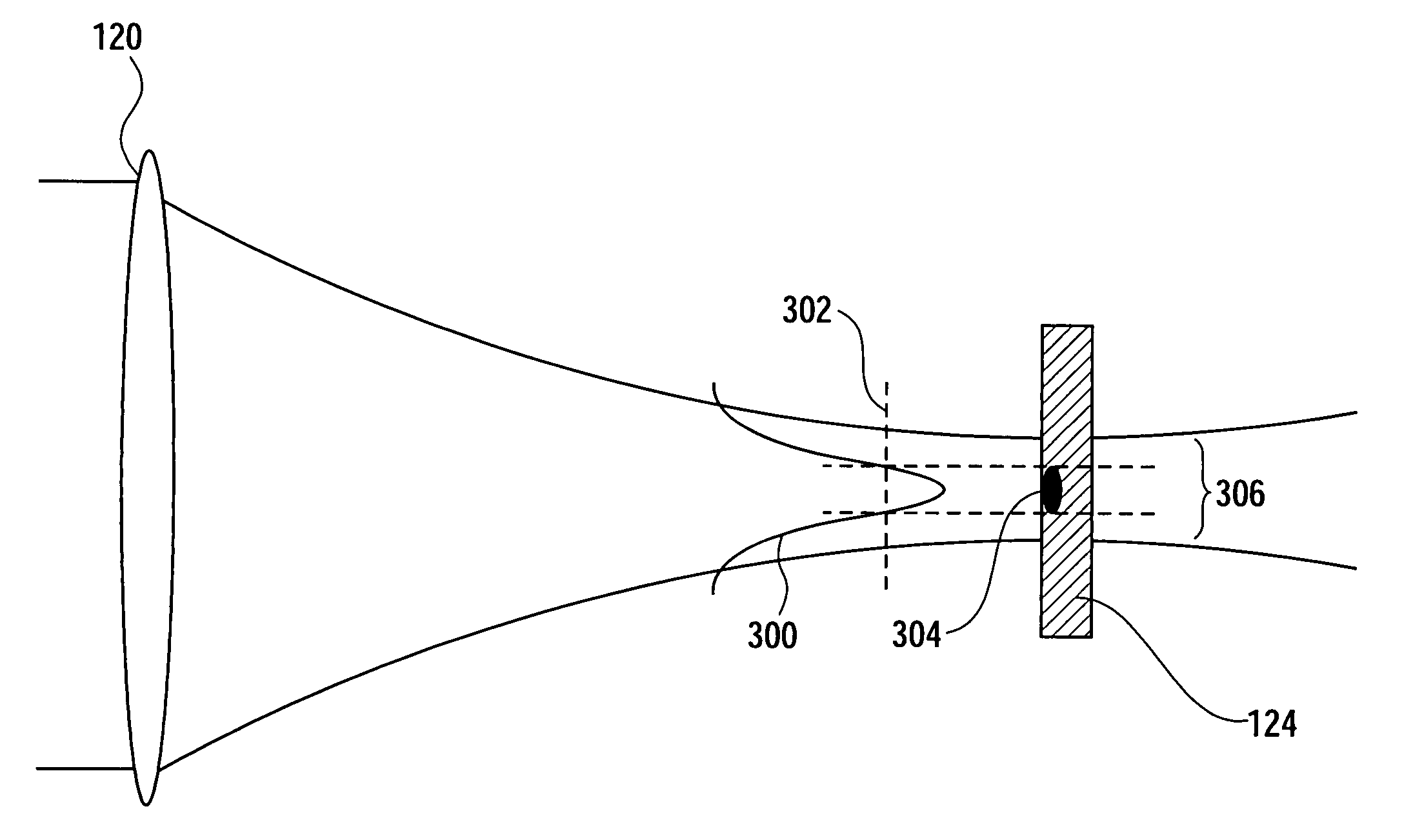Method of precise laser nanomachining with UV ultrafast laser pulses
a laser nano-machining and ultra-fast technology, applied in nanoinformatics, manufacturing tools, instruments, etc., can solve the problems of high-cost techniques usually requiring stringent environmental conditions, difficult to meet size and positioning accuracy requirements of conventional laser micro-machining methods, and complicated manufacturing of materials
- Summary
- Abstract
- Description
- Claims
- Application Information
AI Technical Summary
Benefits of technology
Problems solved by technology
Method used
Image
Examples
Embodiment Construction
[0023]FIG. 1 illustrates a simplified block diagram of an exemplary laser micro-machining system according to the present invention. This exemplary system includes: ultrafast laser oscillator 100; shutter 102; variable attenuator 104; harmonic generating crystal 106; dichroic mirrors 108 and 118; polarization control means 110; lenses 112, 116, and 120; mask 114; work piece holder 122; work piece illumination source 126; beam splitter 128; and digital camera 130. The optical beams in the exemplary system are shown as dotted lines.
[0024]In this exemplary system, ultrafast laser oscillator 100 may desirably include any type of solid state gain medium typically used for ultrafast laser machining applications, such as: Cr:YAG (peak fundamental wavelength, λf=1520 nm); Cr:Forsterite (λf=1230–1270 nm); Nd:YAG and Nd:YVO4 (λf=1064 nm); Nd:GdVO4 (λf=1063 nm); Nd:YLF (λf=1047 nm and 1053 nm); Nd:glass (λf=1047–1087 nm); Yb:YAG (λf=1030 nm); Cr:LiSAF (λf=826–876 nm); Ti:Sapphire (λf=760–820 n...
PUM
| Property | Measurement | Unit |
|---|---|---|
| peak wavelength | aaaaa | aaaaa |
| diameter | aaaaa | aaaaa |
| FWHM | aaaaa | aaaaa |
Abstract
Description
Claims
Application Information
 Login to View More
Login to View More - R&D
- Intellectual Property
- Life Sciences
- Materials
- Tech Scout
- Unparalleled Data Quality
- Higher Quality Content
- 60% Fewer Hallucinations
Browse by: Latest US Patents, China's latest patents, Technical Efficacy Thesaurus, Application Domain, Technology Topic, Popular Technical Reports.
© 2025 PatSnap. All rights reserved.Legal|Privacy policy|Modern Slavery Act Transparency Statement|Sitemap|About US| Contact US: help@patsnap.com



